
A medal or medallion is a small portable artistic object, a thin disc, normally of metal, carrying a design, usually on both sides. They typically have a commemorative purpose of some kind, and many are presented as awards. They may be intended to be worn, suspended from clothing or jewellery in some way, although this has not always been the case. They may be struck like a coin by dies or die-cast in a mould.
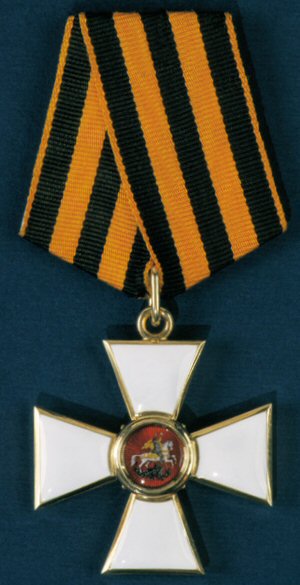
The Order of Saint George is the highest military decoration of the Russian Federation. It was originally established on 26 November 1769 Julian as the highest military decoration of the Russian Empire for commissioned officers and generals by Empress Catherine the Great. After the October Revolution in 1917, it was awarded by the White movement under Alexander Kolchak until their collapse in 1921. The order was revived in the Russian Federation on 20 March 1992 by Decree №1463 of the President of Russia. The current award criteria were amended on 7 September 2010 by Presidential Decree 1099.
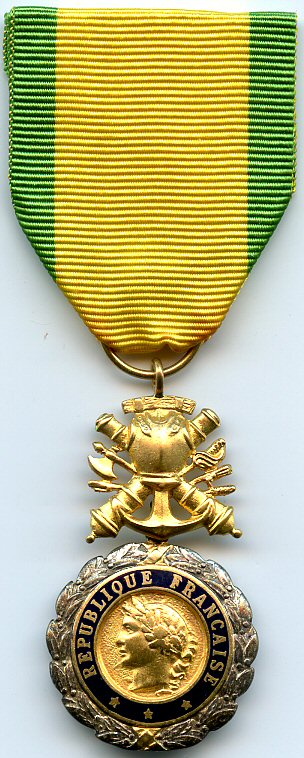
The Médaille militaire is a military decoration of the French Republic for other ranks for meritorious service and acts of bravery in action against an enemy force. It is the third highest award of the French Republic, after the Legion of Honour, a civil and military order, and the Order of Liberation, a Second World War-only order. The Médaille militaire is therefore the most senior entirely military active French decoration.
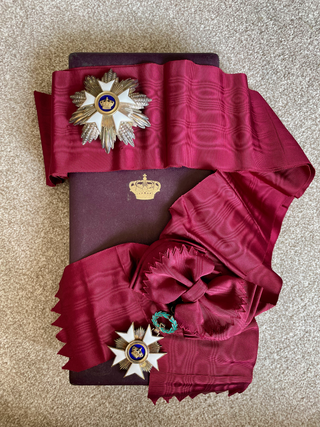
The Order of the Crown is a national order of the Kingdom of Belgium. The Order is one of Belgium's highest honors.

The Cross of Saint George is a state decoration of the Russian Federation. It was initially established by Imperial Russia where it was officially known as the Decoration of the Military Order of Saint George between 1807 and 1913. The Cross of Saint George was reinstated into the Russian awards system in 1992.

The Royal Order of the Sword is a Swedish order of chivalry and military decoration created by King Frederick I of Sweden on 23 February 1748, together with the Order of the Seraphim and the Order of the Polar Star. The motto of the order is in Latin: Pro Patria.

The Benemerenti Medal is a medal awarded by the Pope to members of the clergy and laity for service to the Catholic Church. Originally established as an award for soldiers in the Papal Army, it is now a civil decoration but may still be awarded to members of the Pontifical Swiss Guard.

Pro Ecclesia et Pontifice is a decoration of the Holy See. It is currently conferred for distinguished service to the Catholic Church by lay people and clergy.

The Medal of French Gratitude was a French honour medal created on 13 July 1917 and solely awarded to civilians. The medal was created to express gratitude by the French government to all those who, without legal or military obligation, had come to the aid of the injured, disabled, refugees, or who had performed an act of exceptional dedication in the presence of the enemy during the First World War. The creation of this distinction was mainly the result of unsuccessful offensives of General Nivelle in 1917 and the serious crisis of confidence in France. The French government thus wanted to thank those who, despite the crisis, were always volunteering. It has three classes: bronze, silver, and gold. Nearly 15,000 people and communities were recipients of this award. The medal is no longer awarded, the last award was on 14 February 1959.

The Honour medal for firefighters is a state decoration of France bestowed by the Ministry of the Interior to members of the French Fire Service.

The Medal for Voluntary Military Service is a French military decoration established on 13 March 1975 by decree 75-150. It was established in three grades to recognize voluntary military service in the reserves.

The Polish Army Medal was established by Poland on 3 September 1999 to recognize service to the Polish Army by foreign civilians and military personnel. The medal is presented in three grades Gold, Silver, and Bronze by the Polish Minister of National Defence. Most awards are presented to members of allied armed forces, but the medal is also awarded to civilians who contribute to promoting the history and traditions of the Polish Army outside of Poland.

The Yser Medal was a Belgian campaign medal of World War I, established on 18 October 1918 to denote distinguished service during the 1914 Battle of the Yser in which the Belgian Army stopped the German advance of the German invasion of Belgium.
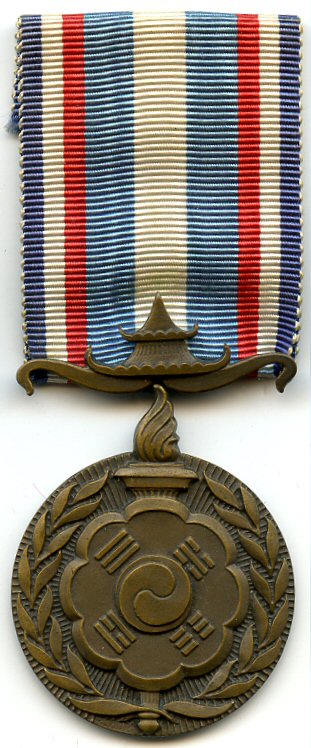
The Commemorative medal for United Nations operations in Korea was a French commemorative war medal established on 8 January 1952 by decree 52-34 for award to members of the French armed forces who fought in the Korean war.
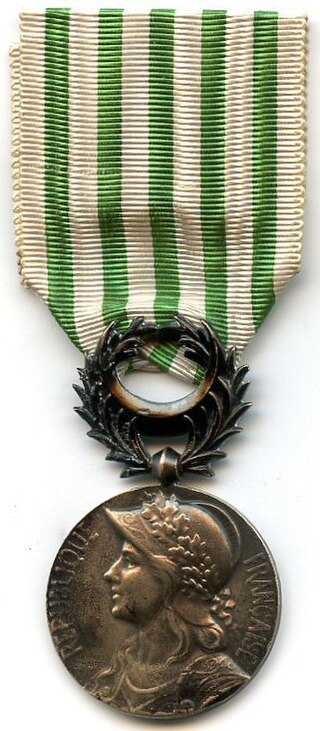
The Dardanelles campaign medal was a French military medal bestowed for participation in the Battle of the Dardanelles, also known as the Gallipoli campaign against the Central Powers by the Corps expéditionnaire d'Orient supported by the Royal Navy and French Navy between 25 April 1915 and 9 January 1916.

The Honour medal of railroads is a state decoration bestowed by the French Republic in the form of an honour medal for work. It was originally meant to reward, depending on the quality and length of time calculated in calendar years, the services rendered by French agents and labourers and to nationals of the French Union or protectorates, in service with the railroads. The Honour medal of railroads was created by decree on 19 August 1913 as a reward for thirty years of service. Since then, many modifications were instituted by consecutive decrees amending the original text.
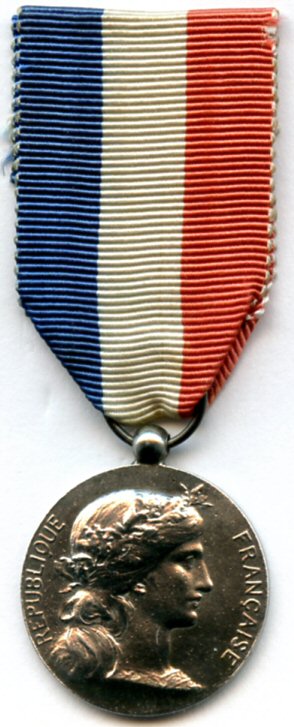
Known for a long time as the President’s medal, the Honour medal of Foreign Affairs is a state decoration bestowed by the French Republic in the form of an honour medal for work. It was originally created by a Royal decree of 28 July 1816 as a single grade medal to reward acts of courage displayed by French nationals on foreign soil. An 1861 Imperial decree saw it be split into the silver and gold grades. The year 1887 saw the addition of swords to the medal for award to both French or allied military personnel for acts of courage in favour of the French in time of war. Although still bestowed in wartime for courage, the modern award is now aimed at rewarding civil servants of the ministry for Foreign Affairs.
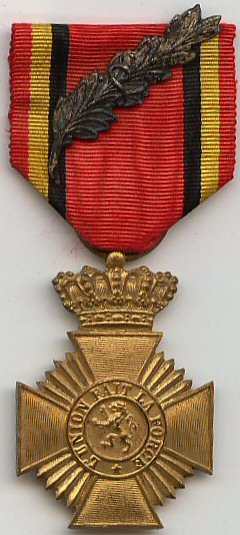
The Military Decoration for Exceptional Service or Acts of Courage or Devotion is awarded to personnel of the Belgian Armed Forces for either displayed herorism or for display of extraordinary devotion to duty. In history, sometimes it is referred to as an 'Article 4' award, as originally, the medal was created as a variation of the military decoration for long service. However, nowadays, both medals are distinct awards, albeit still having the same guilt cross.
The Cross Fidei et Virtuti, also referred to as Cross of Mentana, was a decoration for military merit bestowed by the Holy See during the Italian unification.
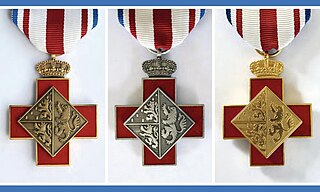
Medal of Merit for Blood Donation is a civil state decoration of Luxembourg established in 1979.



















